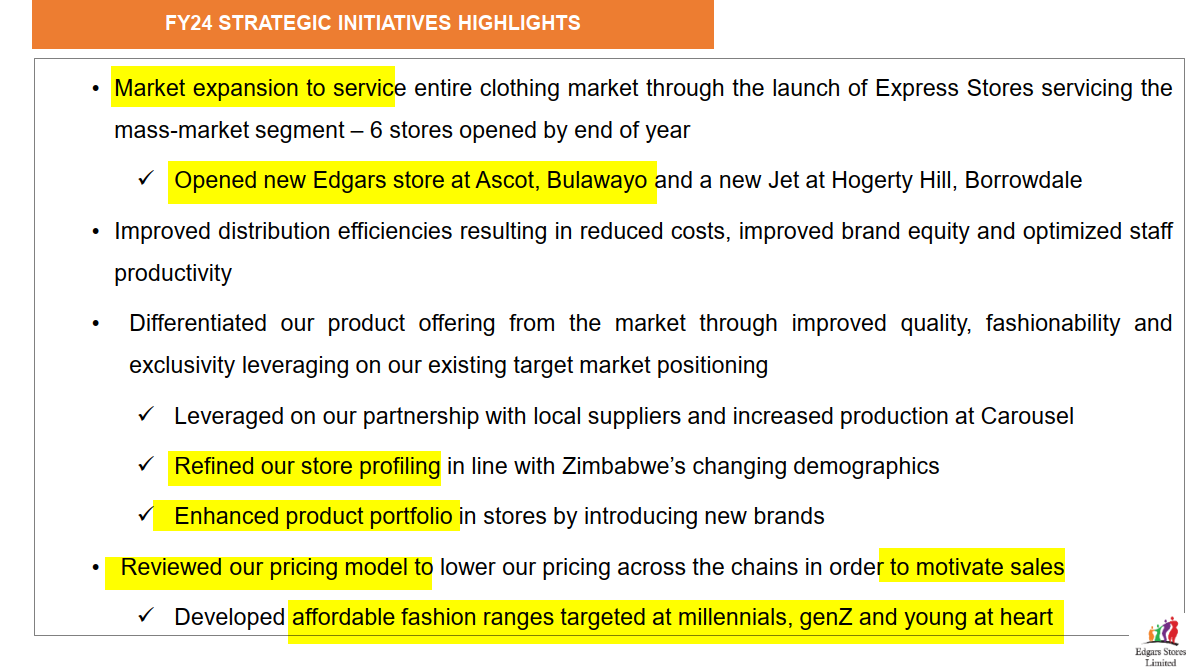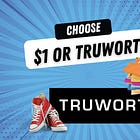Edgars Financial Results: Selling Ice Cream in Winter
Sometimes it’s not the strategy, it’s the season.
Who would you bet on to deliver better financial results?
A skilled salesman selling ice cream on a freezing winter day, or an ordinary one selling on a blazing summer afternoon?
Edgars’ results remind me of the first: plenty of effort and execution — but the market just isn’t buying.
It’s a case study in how even good execution can fail to impress when the environment isn’t on your side — something every business leader should pay attention to.
Let’s unpack!
The Numbers
Edgar’s financial results were decent. Overall, the company reported a profit of $813 thousand, which was also backed by operating cash flow, and so this wasn’t a “paper profit”.
Most of the profit came from cost-cutting efforts, resulting in a 21% decrease in other operating expenses that saved $1.7 million. Since these expenses are usually fixed, this is quite an impressive saving.
It meant that active measures had to be taken to reduce costs, rather than just achieving a lower cost base through lower activity levels.
The number that jumped out at me is the revenue.
Revenue fell by 9% to just below $37 million from $41 million, accompanied by a 22% drop in units sold.
This is a concern, as Edgars’ put in an incredible amount of effort to increase sales in the last financial year.
Activities included launching new stores and improving the existing ones, reviewing pricing to “motivate sales”, and upgrading its product portfolio and targeting.
Edgars also “increased online presence” to have a “deeper reach via social media platforms such as Facebook, Instagram, TikTok, YouTube”.
Below is an example of one of the social media campaigns Edgars ran. I am probably not savvy enough to know how effective these were, but it's clear Edgars was making an effort to do things differently and turn things around.
The final confirmation of this push for sales is that while operating expenses dropped significantly, selling expenses increased from $10.4 million to $11.1 million. This suggests that a lot of investments were also made.
The result of all this effort? Retail sales dropped 9%.
Tough.
Like selling ice cream in winter.
When Summer was in Season
Compare the results above with Edgars’ from about 15 years ago.
In 2010, while revenue was at the same level at $36 million, Edgars was experiencing mind-boggling growth.
Sales went up 222% in one year without much effort or investment. Between 2009 and 2010, Edgars only spent $0.4 million on capital expenditure, which is significantly lower than the $2.2 million Edgars spent between 2023 and 2024.
Despite that, in 2010, Edgars was flying, and by 2012, revenue had shot up to $63 million—driven by the broader economic confidence that came with dollarisation and a more stable political environment.
Was the management team back then that much better than the current team? Or was the execution of the strategy that far advanced?
Not likely, who knows, maybe the current team is even stronger?
The major difference is that one team was selling ice cream in summer and the other is selling ice cream in winter.
Being a formal clothing retailer is incredibly challenging. The informal competition can sell clothes at lower costs due to lower overheads and compliance costs. Additionally, the ability to sell imitation goods without issues gives them a competitive edge.
While Edgars has made good strides, the output in terms of revenue is still challenging.
So What Now?
The good news is that, overall, Edgars managed to control costs and is profitable. Without that, they would have had a loss of just under $1 million.
This is a notable achievement, especially considering its once-peer, Truworths, ended up in insolvency (see article below for more)
I also believe that the manufacturing business could be a promising opportunity. The ability to manufacture custom clothes, such as school uniforms or corporate-branded items, is a space where they have a comparative advantage against informal traders and imports.
When you're in a long winter, the best thing to do is to prepare and keep things moving along, so you're ready for the summer.
What is difficult in the Zimbabwean context, however, is knowing when the season will change.
Where’s the Money, What’s the Move? What does this mean for you?
First, consider what season your industry or market is in.
As shown above, sometimes the greatest leverage you have is not becoming better or investing more, but finding a market in a more favourable season.
For example, the property market has been booming, and companies in the same economy have been performing well.
We covered one such company, TDW, last year as part of the “Prelist”. Whilst Edgars’ revenues were on the decline, TDW has been growing incredibly fast.
But what if you can’t change markets or industries?
In this case, just like it is with seasons, you have to stay in the game long enough for the weather to change. Perseverance and patience are your friends, which sometimes means investing less, preserving capital and managing costs.
I think this is more likely where Edgars is.
I don’t think the current environment will allow for massive growth, given falling disposable incomes and an informal sector that is growing increasingly influential.
However, as shown before, if the tide turns, Edgars could be one of those companies that bounce back quickly.
What do you think?
Know someone in business operating in a 'winter'? Forward this to that business owner, manager, or colleague who could benefit from this perspective. If you're not subscribed yet, subscribe now for free—these strategic insights are delivered to your inbox weekly
P.S.: I am working with public information, and so I may be missing something or just wrong in my analysis.











Greetings Tinashe
Being somewhat older and South African we draw your attention to some interesting facts about the history of Edgars in South Africa where it originated in 1929 as a family owned business (the Preiss family) and started with just one store!
Refer to: https://nimblegroup.co.za/the-edgars-group-from-rags-to-riches-and-back-again/
A significant factor in the growth of Edgars was its decision to allow purchases of clothing on credit.
Another major innovation in the 1980s was the creation of the Edgars Club Magazine.
This was actually Edgar's way to get around the SA legislation at the time which prevented the running of lotteries (and the scheme lost its attractiveness years later when the SA Government introduced a National Lottery). Essentially by subscribing for a monthly magazine (the fee for which was added to your account) for R 5 per month, you were entered into a "Club Member's Draw" to win a monthly prize of R 1million. No account-holders could resist the temptation. In fact people rushed to open accounts (which significantly bolstered not only sales but also revenue via the finance charges which Edgars now collected - their debtors book swelled enormously!).
What was even more interesting was that the Edgars Club magazine cost Edgars not a cent to produce or distribute. In fact they created another revenue stream for themselves : because the suppliers of the clothing and other merchandise sold by Edgars were required to pay for the adverts relating to their products (and other stories and information on them) featured in the magazine.
Talk about selling ice to Eskimos.......Edgars back then really did know a trick or two!!
I've been wanting to buy Ice Cream for a week now, but I still have the flu. Even though I walk into Edgars a lot and check out the suits, and want to buy some John Drake shoes, the Economy (or maybe just my bank account) does now allow me.